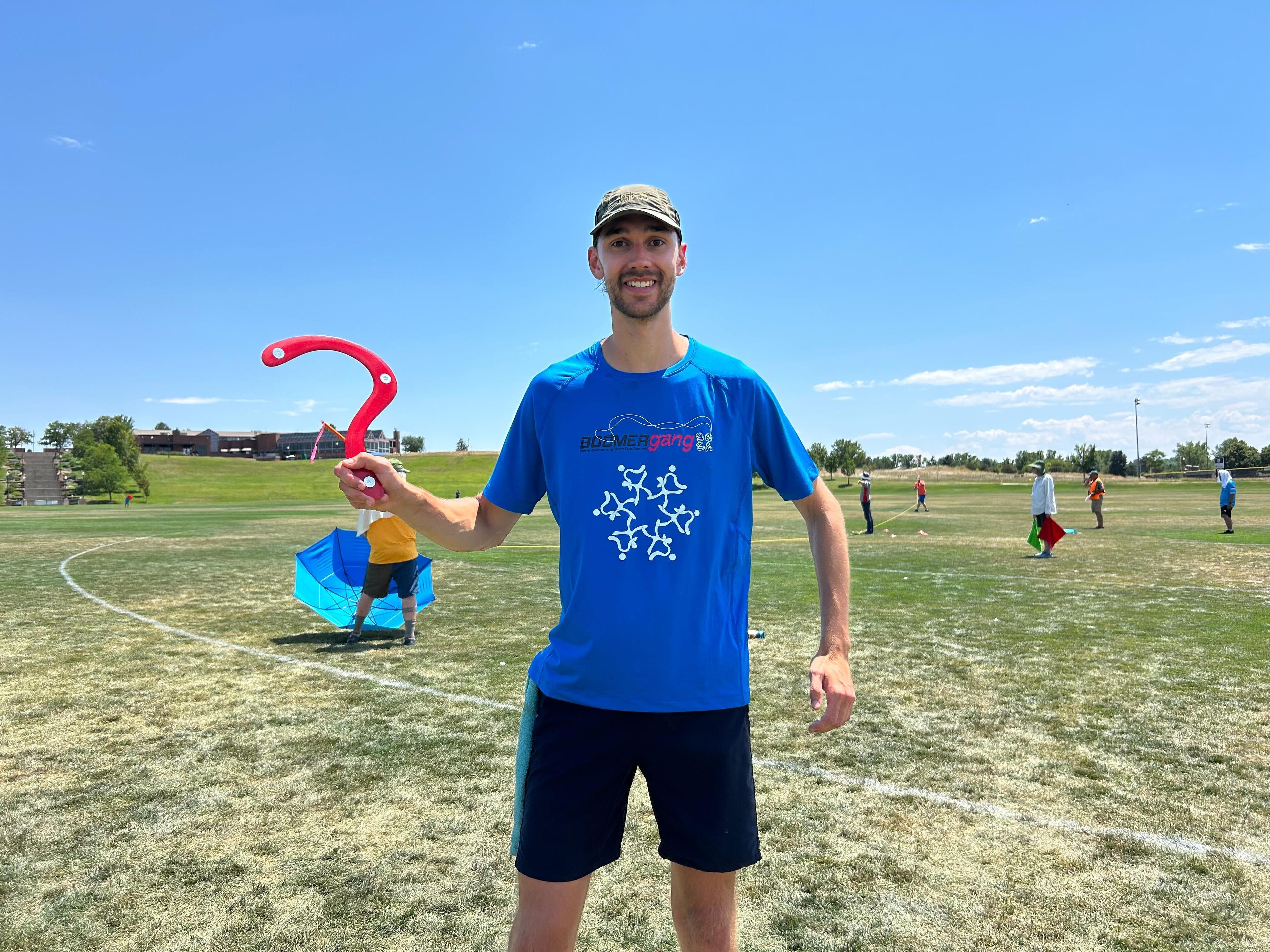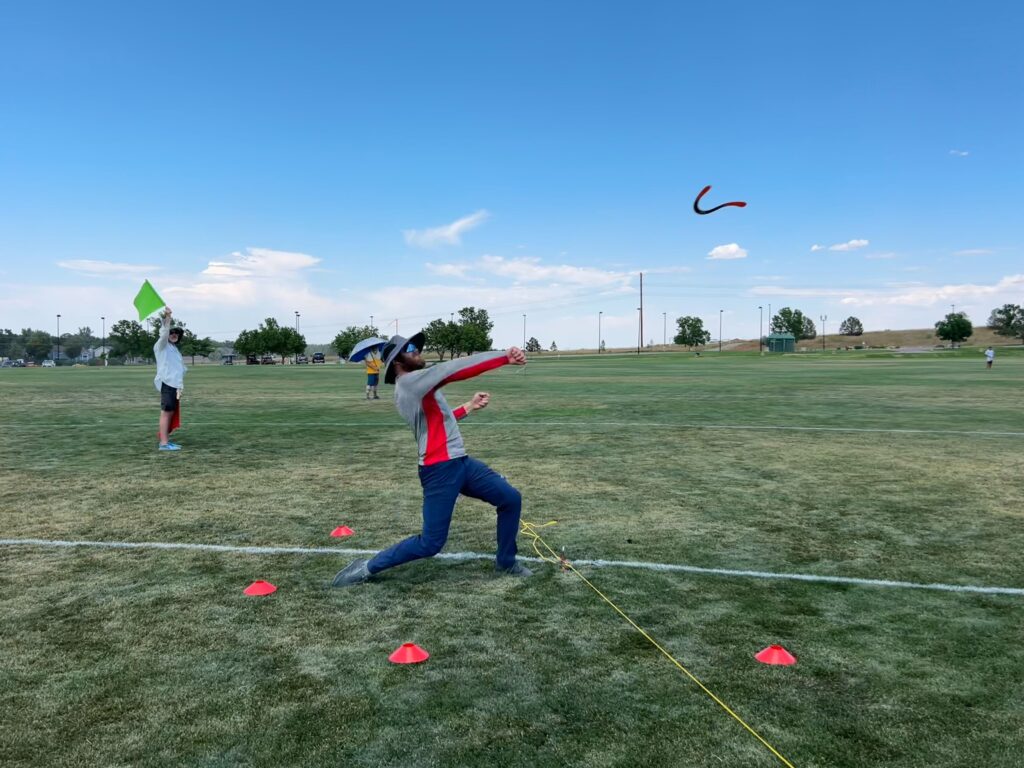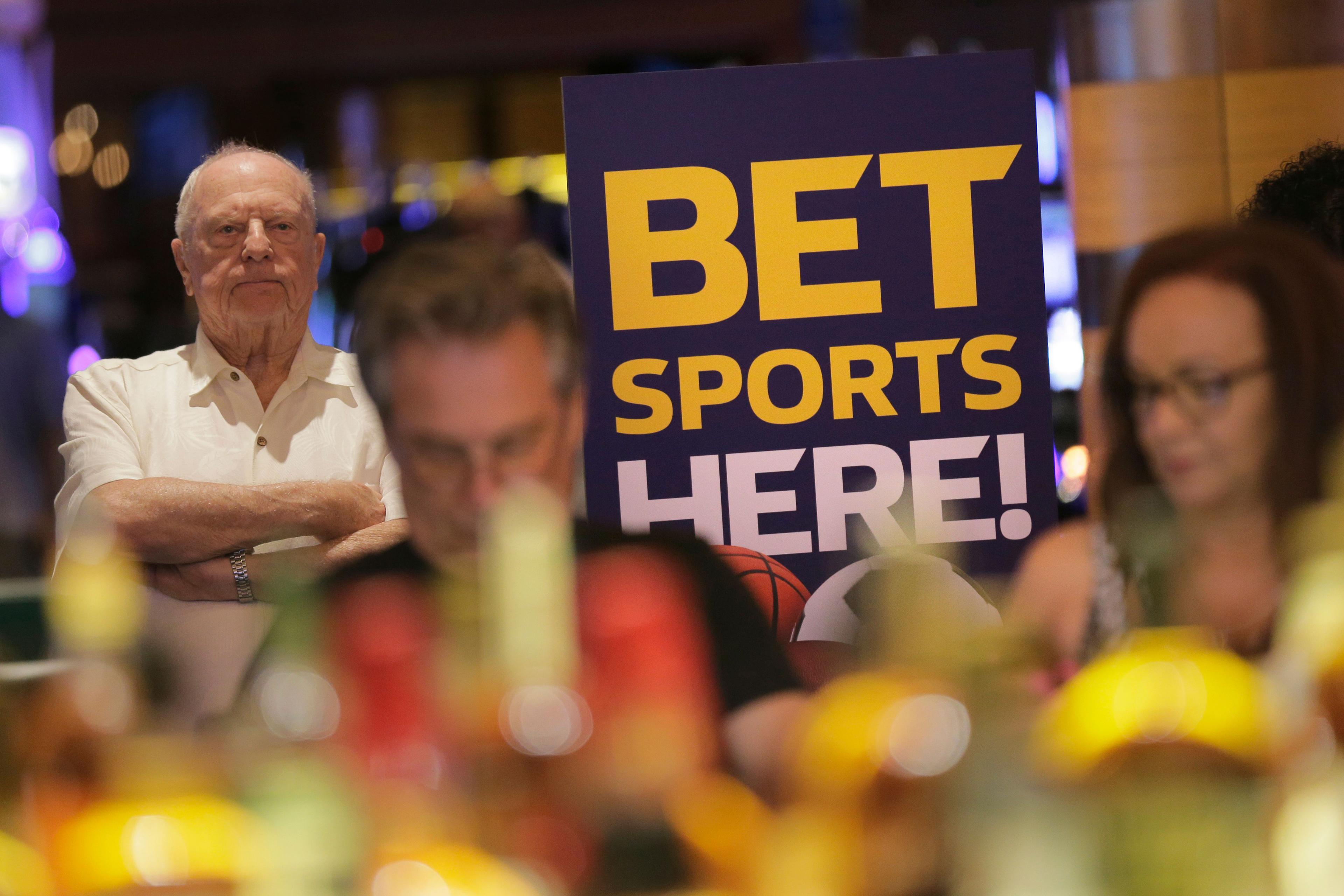
A horn blares. A crowd of 30 people wait quietly as Richard Bower grabs a fistfull of grass and tosses it into the air — he’s seeing which direction the wind is blowing, a key consideration for his sport: competitive boomeranging.
And then, in one quick motion, Bower leans back and flicks his hand upwards and lets out a grunt. There’s a whistling sound as the boomerang flies through the air. A chorus of accents begin commenting on the flight.
“Oh that looks like a good one, mate,” said David Schummy, who traveled from Australia for the event.

The boomerang returns. But not quite far enough. The crowd lets out a collective sigh. The wind has been difficult to judge today. Bower, who is one of the organizers for this year’s World Boomerang Championship, is competing in the “long distance” event.
Competitors and boomerang enthusiasts from as far as Indonesia and Switzerland traveled to Colorado for the 10-day competition which concludes this weekend in Westminster.
While boomerang as a competitive sport has slowly gained popularity over the past few decades — boomerangs themselves have been around for tens of thousands of years and are often credited to the Aboriginal people of Australia. According to the National Museum of Australia, the oldest images of boomerangs were found as paintings on rocks in Australia and are estimated to be around 20,000 years old.
Today the sport features multiple competitive events including team competitions, long-distance throwing, and trick catching. But traditionally, Aboriginal people used boomerangs as weapons for hunting and fighting and as symbols of cultural identity, spirituality, and artistic expression.
Boomerangs still hold a deep-rooted significance for many indigenous cultures, and in the 1980s Australia and the United States held the first competitive Boomerang World Championship. Today, many of the boomerangs used in competition no longer resemble the traditional L-shape. Competitive boomerangs come in many different shapes and sizes depending on the event.
Many of those competing in the championship are life-long boomerang enthusiasts who not only see the sport as a way to demonstrate their skills and compete for the trophy — which has been affectionately nicknamed “Uncle Toby’s Oats Cup” after the Australian cereal company that sponsored the first World Boomerang Championship three decades ago — but also as a way to connect with old friends.
Schummy, a veteran boomerang thrower, competed in the second-ever World Boomerang Championship in 1984. He says that a big reason that keeps him coming back is re-connecting with people from all over the world who he’s competed against over the years.
“It’s an amazing community,” said Schummy. “People do all sorts of different skills in their life, but boomerang brings us all together. It's a sport where everybody cheers for everybody else, because you are competing against yourself really.”
And that sense of community is not just felt between the veteran competitors.
Nils van Veen, a boomerang thrower from The Netherlands, had only been throwing for a few years when he was recruited to an ‘international team’ that represents multiple countries, including Japan, Switzerland, and Germany — which according to him helps make the sport special.
“We are not allowed to win any trophies because we don't represent a nation,” van Veen said. “But we are just here to have fun and try to up the level for the other competitors.”
Van Veen and Schummy are just two of 80 boomerang throwers competing at Westminster City Park. According to organizers, the competition will wrap this Sunday with the announcement of the winners. Events in the park at 10455 N. Sheridan Blvd are open to the public, but organizers warn not to enter the field of play. A pavilion in the park will feature information about boomerangs and the event.






